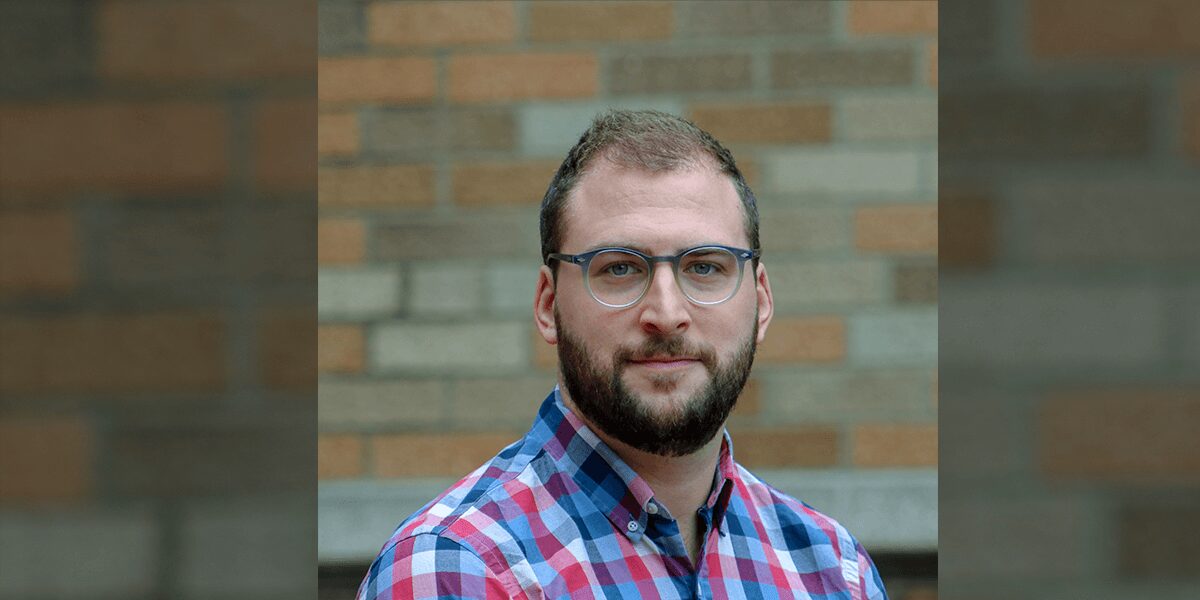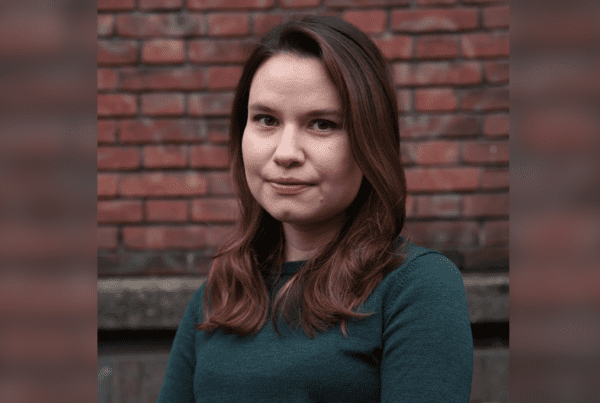You have been working on illiberal movements and populism in Latin America. In your article “The Rise of the Contentious Right,” co-authored with Alejandro Peña, you talk about the ways in which historically right and left parties relate to constituents. Can you talk about these linkages and how they may affect populism in South America in ways that are different than North American or European examples?
It has become common for social movement scholars to state that we need more studies of right-wing, conservative, or illiberal movements. In our paper, we argue that this problem is even more salient in Latin America due to two main reasons. First, most academic work has centered around democratization processes and resistance to neoliberalism, where social movements are understood as bottom-up sources of democratic innovation. And second, the progressive political experiences that took place in many Latin American countries during the last twenty years (the so-called “left turn” or “pink tide”) led to a fertile ground for the study of how this democratic impulse could be institutionalized or at least incorporated into political parties’ realm of activity. As a result of these trends, we know a lot about how movements supply leftist parties with a web of social and organizational networks that create resilient modes of collective association “from below.” However, we lack a framework to understand how right-wing parties relate to social movements, and how this relationship affects their political strategies and positioning more generally.
In this sense, and to respond to your question, I think that the way in which right-wing parties use contentious political strategies in Latin America depends upon their variable capacity to mobilize core constituencies, which are not the same as in North America or Europe. In these regions, the right has historically been successful in mobilizing grievances at the grassroots level, and this is partly what explains the current ascendance of far-right political figures. In Latin America, conservative parties have traditionally relied on corporatist arrangements with elite interest groups or top-down mechanisms of influence and therefore had significant difficulties in constructing popular coalitions after the democratic transitions of the 1980s. As a result of these top-down and mediated linkages with their constituencies, we do not count with many studies explaining when and how rightist party elites engage in contentious politics.
In Latin America, conservative parties have traditionally relied on corporatist arrangements with elite interest groups or top-down mechanisms of influence.
The main puzzle we faced with Alejandro was to explain why right-wing party elites were collaborating with grassroots activist groups in Argentina and Brazil towards the end of the ‘left turn’ and how they were doing so. The two cases were relevant because strong left-wing parties had ruled both countries for more than a decade, and then major political victories against these incumbents had been preceded by a series of mass protests led by tech-savvy conservative activists, who had a central role in coordinating protests at the street level. The article traces the relation between these activist groups and party elites during several years, showing how the latter came to learn the benefits of social media by rallying with their constituencies in the streets and synchronizing strategies with the former. On the one hand, rallying in the streets helped party leaders to develop linkages with middle- and upper-class constituencies who were discontent with the ruling of the left. On the other, it ‘forced’ these elites to engage with cyberactivist groups to better coordinate their public actions.
The article finally shows that the outcome of these interactions depended upon the strategic capacity of activists to position themselves at the center of the public debate and the structuration of the party system in each country. The Brazilian case was marked by an increasing visibility and legitimacy of the main activists compared to traditional party leaders, which, together with a more fragmented party system and open electoral system, contributed to their easy recruitment by new “far-right” peripheral parties – which would become part of Bolsonaro’s coalition. The Argentine case presented the opposite pattern, in which activists’ limited public engagement and weak mobilization structure, added to a closed-list electoral system and limited party fragmentation, limited opportunities for creating a new movement party, and thus isolated activists from party politics.
Part of your work focuses on the central role of social media in rallying different political campaigns, ranging from the feminist movement #NiUnaMenos to middle-class constituencies in Argentina and supporters of illiberal populist Jair Bolsonaro in Brazil. In this sense, how does online activism translate to offline action?
One of my long-term interests has been the interactive nature of what I would call the ‘online’ and ‘offine’ spheres. Most studies assume some type of relationship between online activism and offline political action, although scholars tend to focus more on this relationship at the individual level (i.e., voting behavior) than at the organizational level (i.e., activist groups, political parties, etc.).
In my work, I have tackled this gap by explaining how political activists develop skills that allow them to have one foot in each world, and therefore translate resources, strategies, and credentials from one to the other. For example, in a paper co-authored with Rocio Annunziata, we studied the origins of the feminist movement #NiUnaMenos in Argentina. We show that the deliberations over how to coordinate the first protest events to stop femicides, or the debates over how inclusive the framing about domestic violence should be, were conducted offline, on a face-to-face basis. However, activists’ strategies involved both traditional grassroots actions in the street and digital media-based activism on Twitter and Facebook. Similarly, in our paper with Alejandro on the Contentious Right, we show how Brazilian cyberactivist groups leveraged their strong online presence to negotiate their entry into electoral lists of minor parties, ultimately becoming national representatives.
In my opinion, what these examples illustrate is that rather than a general move towards social-media-based protest, the strategies of contemporary political actors’ straddle online and offline spheres of action. Scholars are conducting a lot of exciting research on how populist leaders leverage social media in their favor, although how the logics of social media are then translated into offline political behavior and strategies are unclear and still open to debate.
Rather than a general move towards social-media-based protest, the strategies of contemporary political actors’ straddle online and offline spheres of action.
Which differences do you see between how populists in Argentina and Brazil use social media to appeal to niche interests of underserved constituencies? Is there a ‘populist’ social media realm?
Well, the case of Jair Bolsonaro fits well with virtually any definition of ‘populism,’ and his rapid ascendance has been linked to social-media-based strategies, which targeted particularly low-income voters. There is ample evidence that Bolsonaro used the popular messaging app WhatsApp, as well as Facebook and Twitter, to spread misinformation during the months leading to his election. We also know that sharing this biased news induces political polarization across voters, increasing the likelihood of voting for a radical party leader like him. This mechanism has been identified in many countries and is far from exclusive to Brazil or Latin America.
Having said this, I would be wary of reducing this type of dynamic to the exercise of populist politics for two reasons. The first one is that most political parties and leaders now use social media to appeal to different constituencies. In fact, while some ‘digital parties’ (i.e., Podemos in Spain or Movimento 5 Stelle in Italy) have captured significant scholarly attention, I would argue that most—if not all—political parties are adjusting their organizational structures to embrace digital media in one way or another. In a new paper co-authored with Alejandro Peña, which is currently under review, we show the virtues of understanding digital affordances as an organizational face of political parties rather than a specific party type, and then outline a typological framework for approaching the relation between what we call the “party-in-the-net” and more traditional party bureaucracies and functions.
In this piece, we discuss the affinity between right-wing populist leaders—who enjoy high intra-party influence and visibility—and low-influence but functionally-aligned party cadres, such as active cores of followers, cyber-members and trolls. However, we also note that their success in establishing this type of vertical social-media-based coalition will depend not only on political skill but also on environmental factors that narrow or expand the possibilities for partisan digital innovation. In this sense, I would say that the use of social media affordances by populist leaders is also heavily influenced by their relationship with traditional party structures and ‘external’ institutional arrangements, and therefore does not only depend on their strategic use of digital platforms.
The vocabulary and basic narratives on which Bolsonaro’s campaign was based preceded him and were part of a long-term effort to generate a new hegemony of free-market and conservative ideas in Brazil.
Relatedly, the second reason I would be wary of identifying a distinctive ‘populist’ social media realm is that populist leaders often exploit digital spaces and vocabularies that pre-exist them. The case of Jair Bolsonaro is paradigmatic in this respect. As part of my doctoral dissertation, I have been studying the political role of free-market think tanks in the Latin American region. My preliminary findings on the Brazilian case show that these non-governmental organizations shifted the meaning of basic political categories constitutive of the ‘common sense’ of many Brazilians. Most of these think tanks and activist groups built a significant digital presence and ended up merging into the political coalition that impeached Dilma Rousseff and drove the PT (Worker’s Party) out of power. This is not to say that Bolsonaro’s disinformation strategies are irrelevant to explain his electoral triumph. However, I would argue that the vocabulary and basic narratives on which Bolsonaro’s campaign was based preceded him and were part of a long-term effort to generate a new hegemony of free-market and conservative ideas in Brazil. Similar arguments have been made by other scholars studying Brazilian politics, such as Camila Rocha or Rodrigo Nunes.
A similar process is also taking place in Argentina with the ascendance of Javier Milei, a right-wing party leader who portrays a mix of conservative and free-market ideologies and has become one of the few—if not the first—elected congress member explicitly raising the flag of libertarianism in the country. A good part of his electoral strategy has been social-media based, although the vocabulary and frames he relies upon preceded him and can be traced to the influence of free-market organizations and intellectuals who generated fertile ground for them to grow.
In these cases, I would argue that new vocabularies and narratives fostered by civil society organizations paved the ground for populist leaders, and digital media played a central part in this process. The same can be said of the rise of Trump and many other far-right populist leaders across the globe.
You have written about contentious politics as a fixture of South American politics. What factors enable actors with potentially disparate political goals to come together beyond being anti-incumbent? What role does anti-partisanship play in current protests?
Many scholars have noted that populism feeds from people’s disenchantment with mainstream political figures. However, populism is only one of many possible outcomes of this disenchantment because mainstream political actors also react and try to channel people’s demands for change. The question is under what conditions are they more likely to be successful, and how they manage to do it.
This connects to your question, because it is usually easier for activists to come together against a specific political figure or issue than constructing an alternative political project. In other words, it is easier to protest current elites and blame them for the country’s economic misfortunes than to create a new political party that proposes an alternative economic model. This generates a tricky situation, where many people disenchanted with political elites are willing to mobilize against them but do not have a clear roadmap of how to translate this collective power into a political project.
It is easier to protest current elites and blame them for the country’s economic misfortunes than to create a new political party that proposes an alternative economic model.
In my work, I argue that during these contexts of generalized anti-incumbency or anti-partisanship, it is easier for political elites to fill in their shoes and either ‘co-opt’ or redirect protesters’ demands in their favor. When I arrived at the University of Notre Dame I was already studying this phenomenon in Argentina and Brazil. However, through conversations with Professor Ann Mische we became more ambitious and started a joint project to explain how political elites react to contentious anti-partisanship across several countries. We found that despite most scholars consider autonomist or anti-partisan movements politically marginal because they do not want to engage with political elites that they consider corrupt, old, or unrepresentative, party elites still tend to use anti-partisanship to reposition themselves vis-à-vis their competitors. I think this underlines the need to study not only how populist leaders ascend to power, but also ‘negative cases’ in which traditional political elites are able to leverage anti-partisanship in their favor and therefore shield political institutions from them.
Our Program is called Illiberalism Studies Program. Do you use the term ‘illiberal’ and how do you relate it to populism? Do both notions partly overlap, and what ‘illiberal’ can bring to our conceptual discussion?
As you have discussed, the term ‘illiberalism’ is based on the negation of another tradition, namely ‘liberalism.’ As such, I think it is helpful to highlight the fact that both left- and right-wing populist leaders tend to seek political strategies that undermine liberal democratic regimes. However, I also think the use of the term poses a risk insofar the relation between populist leaders and economic liberalism is not always of opposites, but rather of complementarity. In this sense, the notions of ‘illiberalism’ and ‘populism’ overlap when referring to political institutions but are far from synonymous when referring to the ideological background of their coalitions or populists’ economic policies when in power.
I think this is an interesting feature of contemporary right-wing populism, which should be further studied. For example, while we know that left-leaning populists in Latin America and Europe have tended to reject free-market fundamentalism, right-leaning populists often embrace radical versions of economic liberalism. That is the case of contemporary leaders such as Bolsonaro in Brazil, Modi in India, and Orbán in Hungary. Similarly, many of the free-market reforms of the 1990s in Latin America were conducted by leaders that have been categorized as ‘populist,’ such as Alberto Fujimori in Perú and Carlos Menem in Argentina. In these cases, the category of ‘illiberalism’ seems to be less valuable insofar it obscures how populist political coalitions often rely on actors that embrace some version of economic liberalism.
The use of the term poses a risk insofar the relation between populist leaders and economic liberalism is not always of opposites, but rather of complementarity.
Rather than posing this as a conceptual limitation, I see it as an exciting and fruitful area of research. What is the relation between political illiberalism and economic liberalism? How can neoliberalism become institutionally embedded through populist policies? How does illiberalism as a ‘thin-ideology’ relate to other ideologies such as libertarianism? I find these questions fascinating.
Tomás Gold is a PhD candidate in the Department of Sociology and PhD Fellow at the Kellogg Institute, University of Notre Dame. His research is focused on explaining the dynamic interactions between political parties, social movements, and civil society organizations seeking to generate both cultural and political change, with a particular interest in conservative and free-market advocacy.







